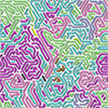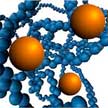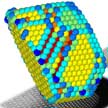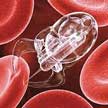Showing Spotlights 41 - 48 of 207 in category All (newest first):
 This article discusses the use of nanotechnology in lubricants. Nanoparticle additives show significant enhancements in lubricant attributes like anti-oxidation capability, tribological features, and thermal properties. Nanotechnology offers the possibility of using nanosized additives to increase the performance of lubricating oil. The addition of nanoparticles to conventional base oils is a promising method for improving properties like friction and wear resistance in instruments.
This article discusses the use of nanotechnology in lubricants. Nanoparticle additives show significant enhancements in lubricant attributes like anti-oxidation capability, tribological features, and thermal properties. Nanotechnology offers the possibility of using nanosized additives to increase the performance of lubricating oil. The addition of nanoparticles to conventional base oils is a promising method for improving properties like friction and wear resistance in instruments.
Jan 26th, 2022
 Being a relatively young field, Bionanotechnology is often neglected within undergraduate and postgraduate curriculum. With an increasing number of researchers and professionals of different backgrounds coming into the field, there is a clear need to have learning platforms that cover techniques, strategies and methods that characterise the design of bionano structures. In September 2021, Cambridge Advance Online, a new educational initiative created between the University of Cambridge and Cambridge University Press and Assessment, launched a 6-week online course about Bionanotechnology: Bionanotechnology from Theory to Practice.
Being a relatively young field, Bionanotechnology is often neglected within undergraduate and postgraduate curriculum. With an increasing number of researchers and professionals of different backgrounds coming into the field, there is a clear need to have learning platforms that cover techniques, strategies and methods that characterise the design of bionano structures. In September 2021, Cambridge Advance Online, a new educational initiative created between the University of Cambridge and Cambridge University Press and Assessment, launched a 6-week online course about Bionanotechnology: Bionanotechnology from Theory to Practice.
Jan 11th, 2022
 The development of smart cities is linked to the development of new materials and devices, the use of sensor networks, the handling of huge amounts of data, the development of communication networks between objects, decision-making, and a range of other smart technologies. Many of these areas benefit from nanotechnology enabled materials and devices such as sensors, photovoltaics, efficient lighting systems or communication networks.
The development of smart cities is linked to the development of new materials and devices, the use of sensor networks, the handling of huge amounts of data, the development of communication networks between objects, decision-making, and a range of other smart technologies. Many of these areas benefit from nanotechnology enabled materials and devices such as sensors, photovoltaics, efficient lighting systems or communication networks.
Nov 30th, 2021
 The modification of surface properties, such as metals, medical devices, and glass mirrors, represents a vital opportunity to inhibit the buildup of proteins or contaminants (i.e., fouling) for biomedical materials/devices, food packaging, many membrane filtration applications. Surface coatings with sustainable anti-fouling, bactericidal or the killing of bacterial membrane cells, and self-cleaning surface properties are particularly desirable and are receiving great attentions. Polymer-based coatings involving fabrications of nanostructured surfaces over conventional chemical-based antimicrobial agents have become major research efforts designed to greatly prevent protein/bacteria adsorption as well as to promote self-cleaning surface abilities for numerous industry applications.
The modification of surface properties, such as metals, medical devices, and glass mirrors, represents a vital opportunity to inhibit the buildup of proteins or contaminants (i.e., fouling) for biomedical materials/devices, food packaging, many membrane filtration applications. Surface coatings with sustainable anti-fouling, bactericidal or the killing of bacterial membrane cells, and self-cleaning surface properties are particularly desirable and are receiving great attentions. Polymer-based coatings involving fabrications of nanostructured surfaces over conventional chemical-based antimicrobial agents have become major research efforts designed to greatly prevent protein/bacteria adsorption as well as to promote self-cleaning surface abilities for numerous industry applications.
Jun 23rd, 2021
 Various additives are added to plastics to either improve processability, change product properties or protect them against thermal, UV or light influences. In the case of a polymer nanocomposite, the additives have at least one dimension of less than 100 nm and can be found in the form of platelets, fibres or particles. They primarily serve to improve tensile strength, thermoformability, flame retardancy, optical and electrical properties, and the barrier properties of the plastic into which they are incorporated.
Various additives are added to plastics to either improve processability, change product properties or protect them against thermal, UV or light influences. In the case of a polymer nanocomposite, the additives have at least one dimension of less than 100 nm and can be found in the form of platelets, fibres or particles. They primarily serve to improve tensile strength, thermoformability, flame retardancy, optical and electrical properties, and the barrier properties of the plastic into which they are incorporated.
Mar 10th, 2021
 Gold nanoparticles are of great importance for a wide range of industrial processes such as CO oxidation, water-gas shift reactions and oxygen reduction at the cathode of hydrogen fuel cells. Scientists investigated the three-dimensional atomic structure of gold nanoparticles at high temperatures. By combining two powerful techniques, electron tomography with atom counting, researchers tracked the morphology changes in gold nanoparticles when heated.
Gold nanoparticles are of great importance for a wide range of industrial processes such as CO oxidation, water-gas shift reactions and oxygen reduction at the cathode of hydrogen fuel cells. Scientists investigated the three-dimensional atomic structure of gold nanoparticles at high temperatures. By combining two powerful techniques, electron tomography with atom counting, researchers tracked the morphology changes in gold nanoparticles when heated.
Jan 22nd, 2021
 Virtual reality (VR) and augmented reality (AR) are some of the hottest multidisciplinary technology trends right now, integrating computer, various sensor, graphic image, communication, measurement and control multimedia, artificial intelligence, and other technologies. Interactive electronic textiles will provide suitable platforms for VR/AR applications to provide a full range of sensory perceptions. Intrinsic conductive nanomaterials such as carbon nanotubes and metallic nanowires as well as nanoscale devices such as triboelectric nanogenerators are key to developing these electronic textiles.
Virtual reality (VR) and augmented reality (AR) are some of the hottest multidisciplinary technology trends right now, integrating computer, various sensor, graphic image, communication, measurement and control multimedia, artificial intelligence, and other technologies. Interactive electronic textiles will provide suitable platforms for VR/AR applications to provide a full range of sensory perceptions. Intrinsic conductive nanomaterials such as carbon nanotubes and metallic nanowires as well as nanoscale devices such as triboelectric nanogenerators are key to developing these electronic textiles.
Dec 7th, 2020
 The ability to communicate new advances in science and technology has never been more important, and in that regard innovations with nanotechnology are growing more rapidly than ever with benefits to both society and the economy. However, for many consumers and the general public, the very idea of nanotechnology is both a wonder and an enigma. But how do we keep our society engaged with new nanotechnology at a time when everyone is more discerning? Well, one approach is to use storytelling.
The ability to communicate new advances in science and technology has never been more important, and in that regard innovations with nanotechnology are growing more rapidly than ever with benefits to both society and the economy. However, for many consumers and the general public, the very idea of nanotechnology is both a wonder and an enigma. But how do we keep our society engaged with new nanotechnology at a time when everyone is more discerning? Well, one approach is to use storytelling.
Oct 15th, 2020
 This article discusses the use of nanotechnology in lubricants. Nanoparticle additives show significant enhancements in lubricant attributes like anti-oxidation capability, tribological features, and thermal properties. Nanotechnology offers the possibility of using nanosized additives to increase the performance of lubricating oil. The addition of nanoparticles to conventional base oils is a promising method for improving properties like friction and wear resistance in instruments.
This article discusses the use of nanotechnology in lubricants. Nanoparticle additives show significant enhancements in lubricant attributes like anti-oxidation capability, tribological features, and thermal properties. Nanotechnology offers the possibility of using nanosized additives to increase the performance of lubricating oil. The addition of nanoparticles to conventional base oils is a promising method for improving properties like friction and wear resistance in instruments.
 Subscribe to our Nanotechnology Spotlight feed
Subscribe to our Nanotechnology Spotlight feed





